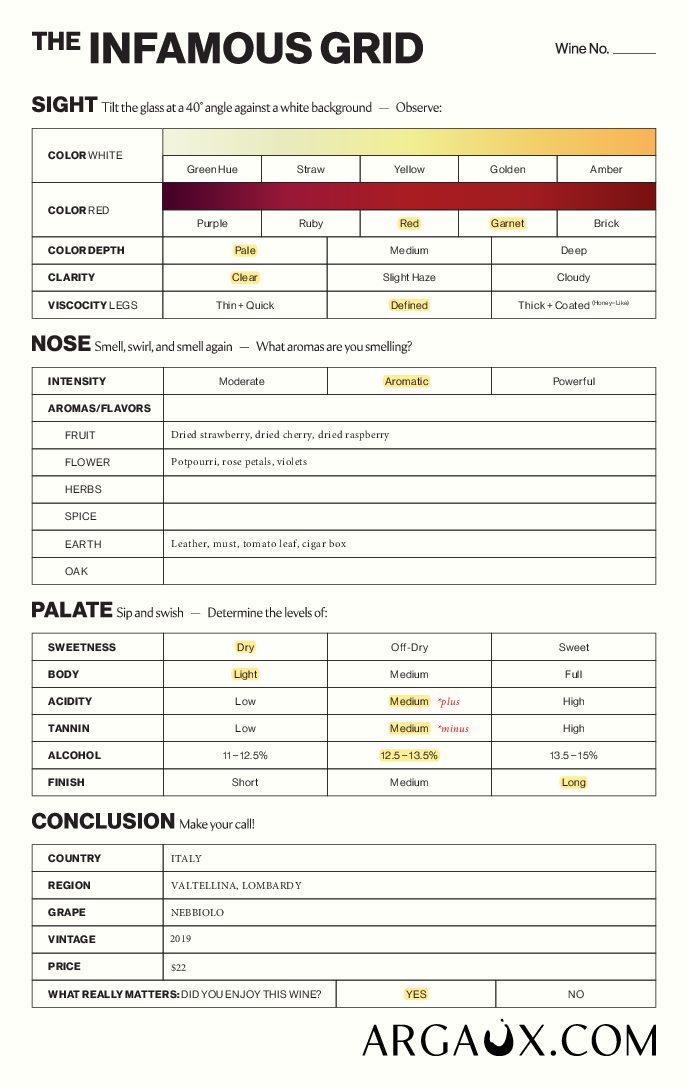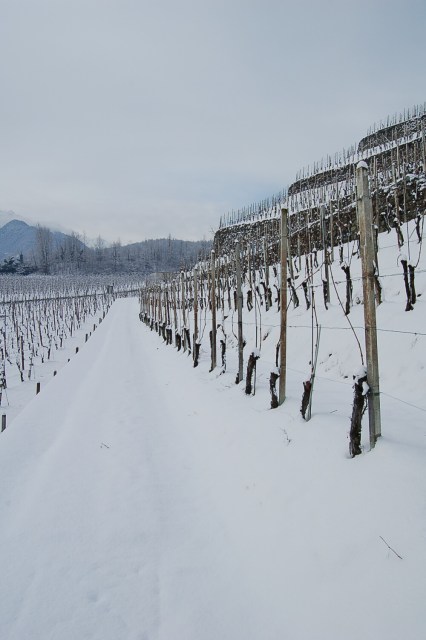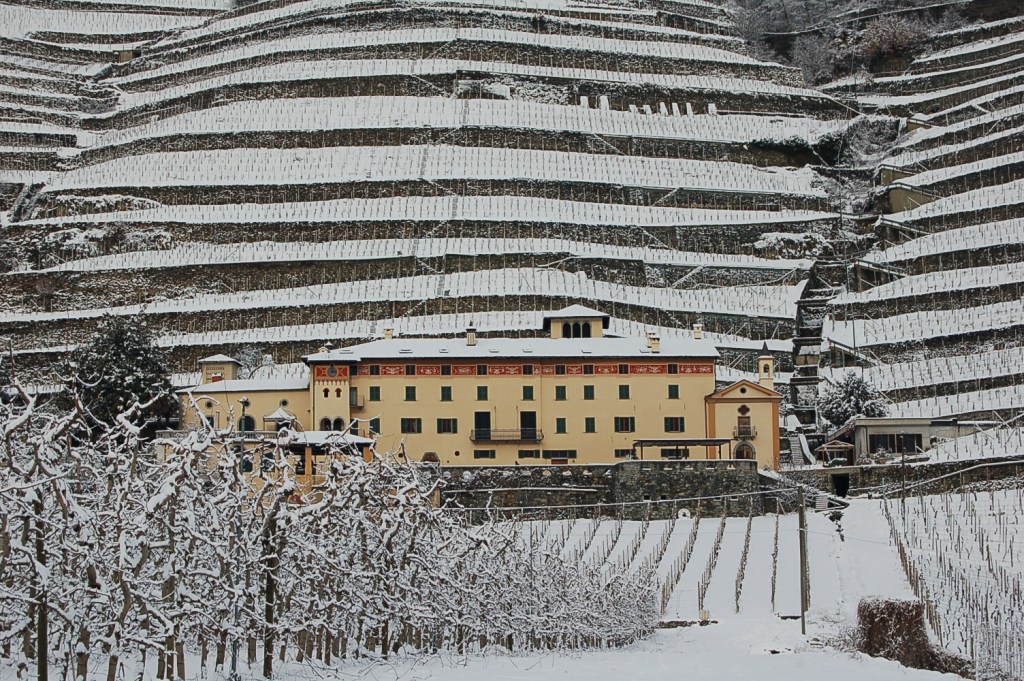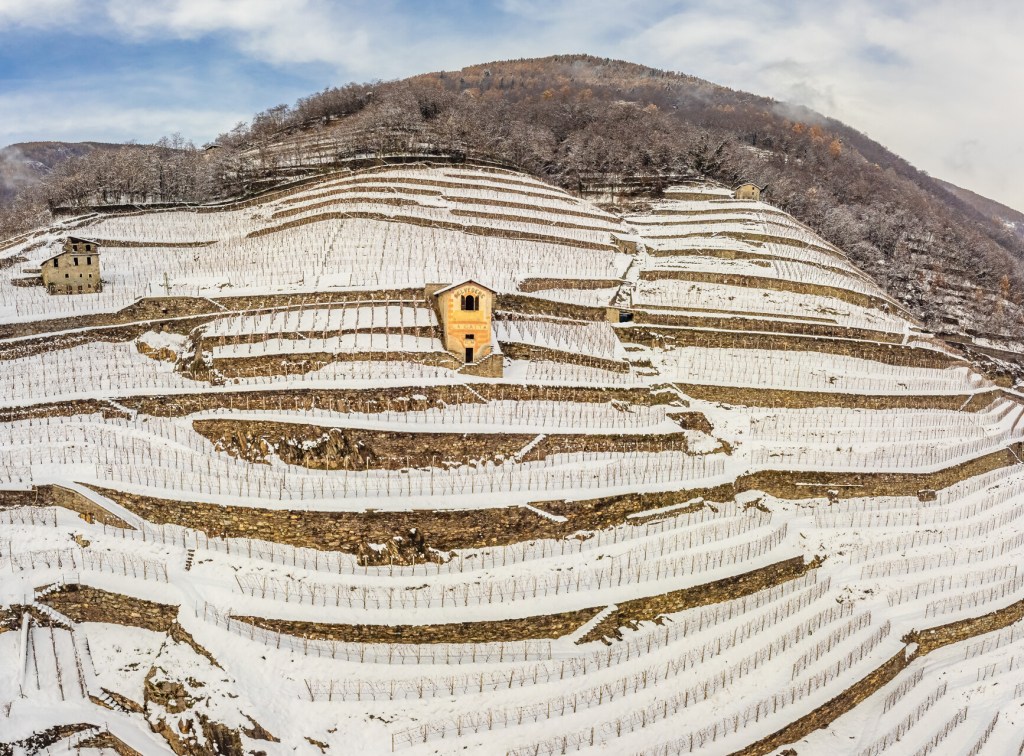2019 Casa Vinicola Triacca ‘Gaux Dopo’ Nebbiolo
This Alpine Nebbiolo is energetic, zippy, and remarkably fresh. The stainless steel fermentation maintains the wine’s bright fruit character, floral quality, and natural suppleness.
Sustainable farming practices and only 100 cases produced!
$22.00
Out of stock
Pairs with
The “La Gatta” estate was originally built in the 1500s as a Dominican monastery and was later purchased as a summer home for the aristocratic de Gatti family, from which the name derives. The Triacca family acquired the old monastery in 1969, which is surrounded by 13 hectares of vigorous vines grown on the steep hillsides of the Italian Alps. In 1987, Domenico Triacca acquired 2,000 square meters of vineyards in Valgella, one of the most highly sought after vineyard areas in Valtellina and built himself a small cellar to start producing and aging wines from his own vineyards. Today, Lucca Triacca runs the estate and is known as one of the most innovative Valtellina producers.
Valtellina lies in an Alpine valley in the northern part of the country in the Lombardy region. It actually forms part of the border between Italy and Switzerland and historically has been Swiss and Austrian territory before becoming part of Italy in 1859. The area benefits from a cool, mountain climate, though ‘La Breva,’ a gentle wind that originates over Lake Como, moves warm air into the valley and helps promote pollination in the spring. The vineyards lie on extremely steep slopes and tiny terraces (similar to the Mosel or Alto Adige) requiring it all to be worked by hand. Some suggest that Nebbiolo may have even originated in Valtellina! Today, it is known for its bright, cherry-scented Nebbiolo, known here as Chiavennasca (after the nearby town of Chiavenna).
“Nebbiolo from Valtellina has always been one of my favorite expressions of this grape. It’s Alpine wine; a much lighter and fresher version of your typical Nebbiolo from Piedmont that you might be more familiar with. They are high acid, food-friendly wines that are often significantly more affordable than your average Barolo. These wines are great with good company, a cheese & charcuterie plate, and some light pasta.” – Lexi Jones, Director of Imports
Related Items
-
Riofavara Sicilian Organic Extra Virgin Olive Oil
$28.00This organic olive oil from Sicily makes for the ultimate stocking stuffer! It is made from the local Antica Verdese variety and is aromatic with a buttery richness and just the right amount of spicy kick.
Organic farming proactices
-
2022 Ashes & Diamond Napa Valley Cabernet Sauvignon
$85.00Ashes & Diamonds crafts its wines with a focus on finesse, balance, and drinkability, reflecting a restrained style reminiscent of Napa Valley’s 1960s era.
This wine is dialed from start to finish. The grapes are from Diamond Mountain and Atlas Peak and was made by Napa legend Steve Matthiasson and Diana Snowden Seysses.
Organic and regenerative farming practices, prioritizing soil health and biodiversity and low intervention winemaking.
-
Best Seller
2021 Stéphane Rousset Crozes-Hermitage ‘Les Mejeans’
$44.00Mineral, Rustic, Medium Body, Elegant and Aromatic — Contrary to the very high prices found in Hermitage, Cornas, and Côte-Rôtie, wines from Crozes-Hermitage tend to fall at much more affordable price points—and are just as textured, complex, and delicious! This savory, food-friendly wine pairs perfectly with any meat dishes and this Frenchy Lentils recipe.
Organic and biodynamic farming practices, destemmed, and raised in a combination of 225 and 500-liter French oak barrels (very small amount of new oak used)
-
2023 Dönnhoff Weissburgunder Trocken
$35.00Although lesser known than its Pinot Gris/Grigio and Pinot Noir relatives, make no mistake—high-quality expressions of Pinot Blanc are absolutely worth seeking out for those who like mineral-driven, crisp whites. This wine is LIGHTS OUT!
Sustainable and dry-farmed vineyards (Fair’n Green certified), native yeast fermentation, minimal intervention and a family-owned estate.










